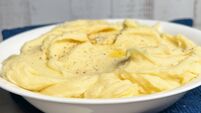And still we rise: homemade cinnamon buns are easier than you think
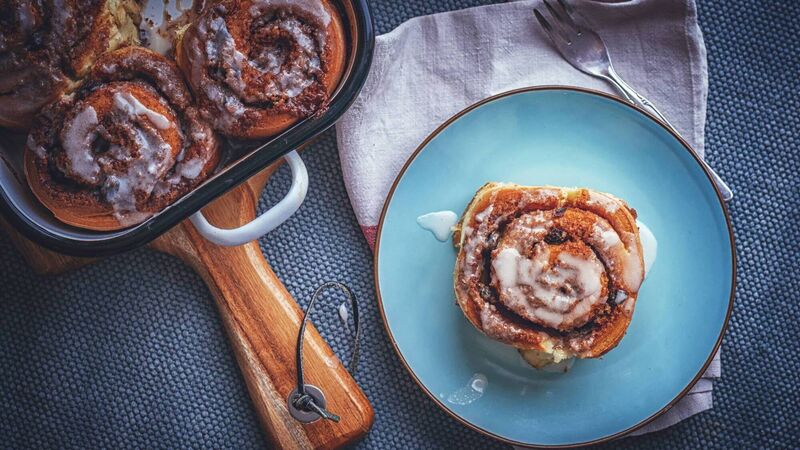
Preparing Cinnamon Buns in Domestic Kitchen
- Stand mixer (optional)
- Sheet pan
- Weighing scales
- Loaf tin
- Muffin tin
Makes 1 focaccia, around 800g
- 330ml water
- 12g olive oil, plus extra for brushing
- 7g dried yeast
- 450g strong white flour
- 1 ½ tsp salt
- semolina, for dusting for toppings
- 2 sprigs rosemary, leaves stripped from the stalk
- sea salt
- olive oil, for drizzling
Weigh your water into a large mixing bowl and mix in the olive oil and yeast. Add the flour and mix, then add the salt.
The dough will be sticky and wet, as focaccia is relatively high-hydration dough.
Once combined, transfer your dough to a mixer fitted with a dough hook and knead until the dough is smooth and elastic, or knead by hand on a work surface very lightly oiled with olive oil.
Transfer the dough to a lightly-oiled bowl.
Knock it back by drawing the sides up and then folding them into the centre, cover with a cloth, and leave to rest for one hour at room temperature, or until the dough has doubled in size.
Knock the dough back a second time. Don’t overwork it, however, as you want an open crumb that’s not too tight.
Leave the dough to rest for another hour, and then repeat the knocking back. Be very gentle with the dough while doing this, to preserve the bubbles that are developing. Leave it to rest for another hour.
Heat your oven to 240C/gas 9. Generously brush a baking tray with olive oil. Turn the dough out on to the tray and prod it outwards into a round.
It will expand a bit when baking, so leave some room at the sides of the tray. Drizzle with oil, then add your toppings. Prod holes into the dough with your fingers.
You can make these deep, as even though this is a ‘flatbread’, it will rise a bit due to the yeast. If any bubbles form on the surface, poke them with a knife to prevent them developing crispy crusts.
Bake in the oven for 20–25 minutes. Check it after 10 minutes, and if it is colouring too quickly turn the oven down to 220°C/gas mark 7 for the remaining time.
Once baked, the bottom should sound hollow when tapped. Drizzle more olive oil on top before serving (be generous!), and allow the focaccia to cool before slicing.
Experiment with your toppings to suit your taste. Thinly sliced potato and onion work really well on top with a good glug of olive oil. So too, do roast peppers, olives and onions. Stud your focaccia with slices of garlic for a bread with a punch, or add a handful of olives and sundried tomatoes to the dough
during the mixing stage for a bread that is flavoured throughout.
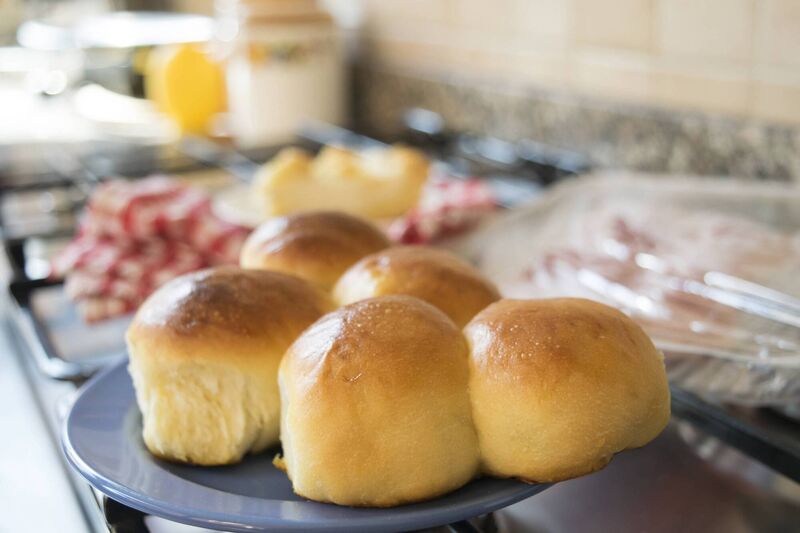
Makes 15-20 individual brioches or 2 large ones
- 25g yeast
- 50g caster sugar
- 65 ml tepid water
- 4 eggs
- 450g strong white flour large pinch of salt
- 225g soft butter
- 1 egg, whisked to glaze
Place the yeast and sugar in the tepid water in the bowl of an electric mixer.
Allow to stand for five minutes. Add the eggs, flour and salt and mix to a stiff dough with the dough hook.
When the mixture is smooth, beat in the soft butter in small pieces.
Don’t add the next piece of butter until the previous piece has been completely absorbed. This kneading stage should take about half an hour.
The finished dough should have a silky appearance.
It should come away from the sides of the bowl and when you touch the dough it should be damp but not sticky.
Place it in an oiled bowl, cover and rest it overnight in the fridge.
The following day prepare your brioche tins — either use a loaf tin or muffin tins. Then working quickly, remove the dough from the fridge, knock back by folding it in on itself. It is crucial you work quickly, otherwise the butter will begin to melt and the dough will be too sticky to handle.
Weigh the dough into 50g pieces and roll into balls. With the side of your hand roll each ball of dough into a teardrop shape, do this by rolling with the pressure slightly off centre. Put the dough heavy end first into the well-buttered brioche moulds.
Push the 'little hat' towards the centre, leaving it just protruding above the body of the dough. Dip the thick end of a chopstick in a little flour and push it down through the dough almost to the bottom, this may sound strange but we have found it is the best method to keep the ‘little hat’ in place. Brush the top of each brioche gently with egg wash.
Allow them to prove in a warm place 45 minutes to 1 hour until they have doubled in size. Preheat the oven to 180ºC/Gas Mark 4. Egg wash the brioches very gently again. Cook for 20-25 minutes. Serve freshly baked with butter and homemade strawberry jam.
Large brioches will take 40-50 minutes approx. to cook. A skewer inserted into the centre should come out clean.
Stale brioche is 'made' for french toast. Whisk an egg with vanilla extract and soak slices of brioche in the egg mixture before cooking gently in lots of butter over a low heat. Serve with berries and maple syrup, to drizzle.
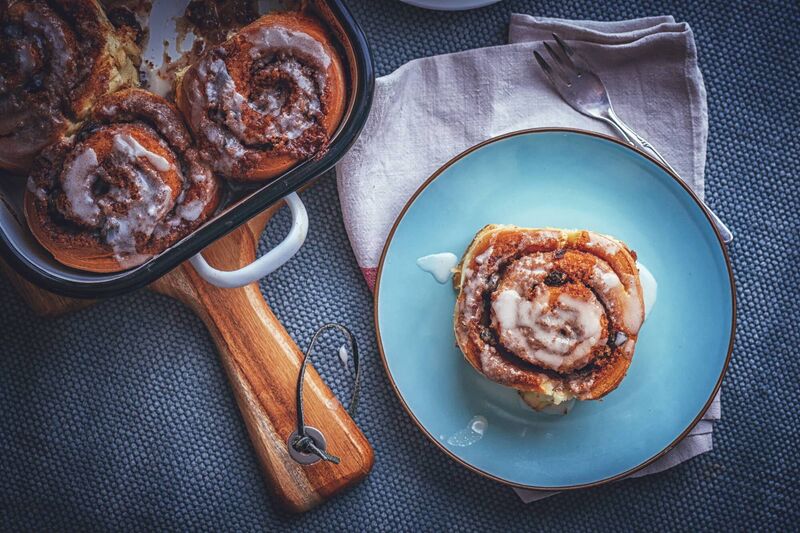
- 200 mls milk, warm
- 100g butter, melted
- 150g plain flour
- 100g wholemeal flour
- 250g strong white flour
- 1½ tsp fast-acting yeast
- 4 tsp golden caster sugar
- 2 eggs, lightly beaten
- A dash of sunflower oil
- 1 egg, to glaze
- 75g butter
- 30g golden caster sugar
- 30g muscovado sugar
- 100g pecan nuts, finely chopped
- 50g icing sugar
- 3 tbsp water
Stir the melted butter into the warm milk and set aside.
Stir the flours, yeast and caster sugar together until combined. Make a well in the centre and add in the eggs and milk mixture. Bring the dry ingredients into the well and stir everything until combined and a sticky dough has formed.
Lightly oil a clean surface. Tip your dough onto the oiled surface and knead until the dough becomes less sticky and smooth.
Place into an oiled bowl and cover the top. Keep in a warm place for about an hour until it doubles in size.
While your dough is rising you can make the filling by mixing all of the ingredients together. Grease a baking tin or dish with deep sides.
Knock back or roughly knead the dough to take out the largest of the bubbles and then gently shape it into a flat rectangle. Spread the filling on top. With the longest edge closest to you, roll the dough into a cylinder. Cut cylinder into about 12 even slices.
Fit the slices into the greased tin and cover with a damp tea towel. Set aside to allow them to rise again for about half an hour. Preheat your oven to 200°C.
Brush the top of the buns with the beaten egg and bake for about 15 minutes until the buns have risen and are golden on top. Mix together the icing sugar and water until it comes to a spreadable consistency. Drizzle over the buns once cooled and eat.
Use whatever nuts you like in the filling. If you want something to break the sweetness, grate the zest of an orange into the sugar mixture and use chopped walnuts instead of pecans.
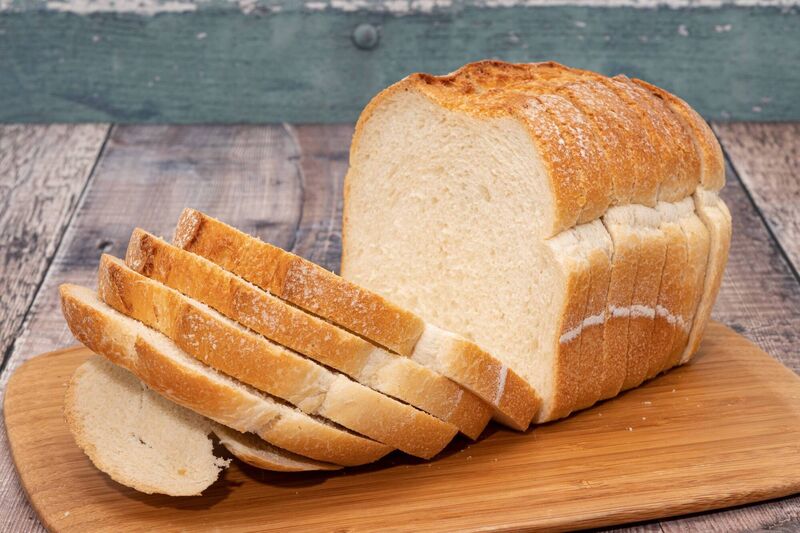
Makes one loaf
- 450g strong white flour
- 1 tsp salt
- 1 tsp honey
- 7g fast action yeast fresh non-GM yeast
- 300ml water at blood heat
- sesame seeds — optional
In a wide, roomy bowl, mix the flour with the salt.
The ingredients should all be at room temperature.
In a small bowl or Pyrex jug, mix the honey with the water, and crumble in the yeast.
Sit the bowl for a few minutes in a warm place (kitchen temperature fine) to allow the yeast to start to work.
Meanwhile, check to see if the yeast is rising.
After about 3-4 minutes it will have a creamy and slightly frothy appearance on top.
When ready, stir and pour it, into the flour to make a loose-wet dough. The mixture should be just too wet to knead.
Meanwhile, brush the base and sides of the bread tin with a good quality sunflower oil. Scoop the mixture into the greased tin.
Sprinkle the top of the loaves with sesame seeds if you like.
Put the tin in a warm place somewhere close to the cooker or near a radiator perhaps.
Cover the tin with a tea towel to prevent a skin from forming.
Heat the oven to 230C/Gas Mark 8.
Just as the bread comes almost to the top of the tin, about 15-20 minutes (time varies depending on room temperature).
Remove the tea towel and pop the loaves in the oven 230°C/gas mark 8 for 20 minutes, then turn the oven down to 200ºC/gas mark 6 for another 40-50 minutes or until it looks nicely browned and sound hollow when tapped.
The bread will rise a little further in the oven. This is called ‘oven spring’.
If however. the bread rises to the top of the tin before it goes into the oven it will continue to rise and flow over the edges.
We usually remove the loaf from the tin about 10 minutes before the end of cooking and put them back into the oven to crisp all round, but if you like a softer crust there’s no need to do this.
Cool on a wire rack.
Use half wholemeal flour to add a more wholegrain feel to this bread. A handful of mixed seeds also add a delightful crunch.

